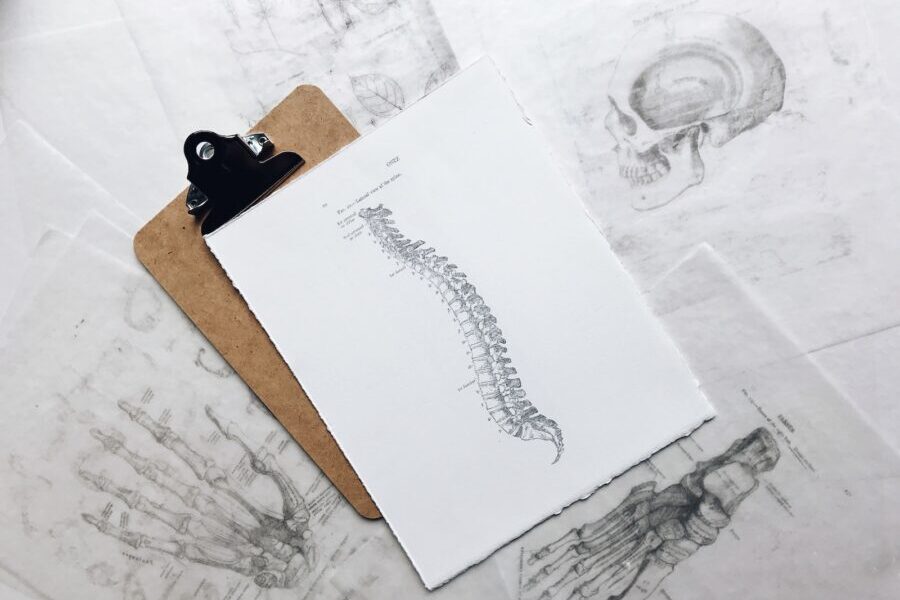How can employers reduce workplace absence due to musculoskeletal (MSK) conditions, which consistently rank as the second highest cause of physical wellbeing-related issues?
Analysis of data taken between 2020-2023 from over 7,000 employees takes a deeper dive into the age-related factors that employers need to consider when it comes to identifying and addressing physical wellbeing issues in the workplace.
Age matters
Data shows that the prevalence of MSK conditions increases with age, with 7% of employees aged between 19 to 29 experiencing MSK conditions, increasing to 11% in 30- to 39-year-olds and 14% for 40- to 49-year-olds.
While this is to be expected, the types of conditions vary between the generations. In younger employees, the main MSK complaint is lower back issues, accounting for 32% of MSK conditions. In contrast, knee-related issues are most common for the eldest cohort of workers. Job role may influence this to some extent, but this general trend can be found across multiple sectors.
Understanding age-related conditions can help you manage different interventions for different age groups to achieve a greater return on investment and experience.
Hybrid working
If your organisation supports hybrid working, you may have noticed an increase in MSK conditions. This is partly due to employees having a poor at home workstation set up, where it is much harder to assess and manage health and safety compliance.
Figures from the ONS[1] last year show that hybrid working was more common for employees aged 30 to 49, and those at the higher end of this age bracket (45 +) experienced significantly higher rates of MSK issues than other age brackets. Employees aged 16 to 34, who were less likely to work from home, had significantly lower rates of work-related MSK conditions[2].
Although we have seen that MSK conditions increase with age, it’s interesting to see the correlation and a rise in MSK conditions for those working from home.
Whilst the older generation may feel they have heard it all before, employers must continue to highlight and address potential risks amongst an age group who are more vulnerable to these conditions. Where this is the case for employers, remote assessments and encouraging employees to take responsibility for increasing their physical activity should be incorporated into an overall wellbeing programme. This could include encouraging walking meetings, taking a movement break between meetings or if working from home creating a ‘fake’ commute as an opportunity to disconnect and get some movement.
Underlying causes and contributory risk factors
Identifying and tackling physical wellbeing issues in the workplace is difficult if we don’t understand what causes or contributes to MSK issues in the first place.
Exercise and diet
Exercise and diet can have a profound impact. The less weight a person is carrying, the less strain on their joints. The more regular exercise, the less pain, stiffness and inflammation in the joints and muscles. Age also determines the impact of our diet and exercise. As we get older, our metabolic rate decreases, meaning it takes more energy to burn calories.
While these factors may seem like an obvious thing to address, doing so in the workplace is challenging. The data has shown that 69% of employees with MSK conditions are overweight and 92% did not meet recommended activity guidelines[3], a statistic similar to the England 2020 report on Statistic on Obesity, Physical Activity and Diet[4]. Providing help and support here comes down to education, providing age-relevant resources, and access to individualised support preventatively that employees can easily use in their daily lives. Guided self-management is often effective in improving health and preventing repeat occurrences, but it needs to be readily accessible and easy for people to incorporate in their working lives while speaking to the needs of employees of all ages.
Attitudes
A slightly surprising, but key risk factor in the prevalence of MSK conditions, is the person’s attitude, beliefs and fears about their condition. We found that 58% of people with MSK conditions present limiting attitudes and fears in relation to their condition. This means that as we get older, it’s easy to fall into a way of thinking that puts these conditions down to our age and leaves us feeling less positive about the chances of recovery than someone in their 20s or 30s would.
Education and self-management are important for older cohorts of workers in helping them change behaviours and effectively manage their own symptoms. This is particularly important for your younger employees, who can begin to build resilience and understand the things they can do to prevent MSK conditions as they get older.
Time for change
Although we’ve seen positive steps towards a boost in employee physical wellbeing support recently, with the Government’s announcement of a £400m support package to improve mental health and MSK resources for workers and encouraging the over 50s back into the workplace, it’s unclear how this will work. Simply providing reactive solutions that do not get to the root cause of the problem will do little to reduce the repeated cycle of MSK sickness absence. Equally, a ‘blanket approach’ to physical wellbeing is not enough. Understanding the varying MSK complaints across different age groups and addressing the underlying causes is vital to improving MSK ill health.
Data holds the key
Data is the biggest tool in any employer’s armory. When it comes to workplace wellbeing, there is no one size fits all approach, and these insights would not be identifiable or addressable without having accurate data on the workforce. No collective workforce is the same and therefore there is there no effective standardisation of the initiatives that should, be in place. The only way for an employer to get this right is to extract the relevant information, integrate a host of wellbeing data from different sources to spot patterns and identify trends, and then meaningfully interpreting this to create and implement a strategy that caters for all ages.
References
[1] https://www.ons.gov.uk/employmentandlabourmarket/peopleinwork/employmentandemployeetypes/articles/ishybridworkingheretostay/2022-05-23
[2] https://www.hse.gov.uk/statistics/causdis/msd.pdf
[3] Data comes from all healthcare rm service channels between 1 January 2019 to 31 October 2022, unless stated otherwise.
[4] https://digital.nhs.uk/data-and-information/publications/statistical/statistics-on-obesity-physical-activity-and-diet/england-2020
Victoria Davidson
Victoria Davidson is Wellbeing Director at healthcare rm. Victoria studied naturopathic medicine in Canada and holds a Master's degree in Psychology. She has developed a holistic approach to health over 20 years and works with people to proactively optimise their health and wellbeing as well as providing support to manage current health conditions. Victoria also has experience of supporting the health and wellbeing of organisations and has recently completed an MSc in Workplace Health and Wellbeing, in which her project focussed on Menopause within the workplace.



